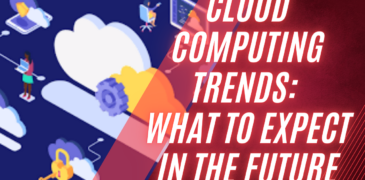Are you curious about the future of cloud computing? This technology is constantly transforming the way businesses operate with advantages such as scalability, flexibility, and cost-effectiveness. What trends can we anticipate in the realm of cloud computing in the coming years?
In this article, we will delve into the cloud computing trends that show promise in shaping the industry in the upcoming years. Our focus will be on exploring the growing prominence of edge computing and serverless architecture, as well as the heightened significance of data privacy and security. Through this analysis, we aim to provide a comprehensive understanding of the future of this rapidly evolving field.
Cloud computing has become increasingly popular due to its numerous advantages, which include the ability to easily adapt to changing requirements, pay-as-you-go pricing structures, and the worldwide availability of data and applications. Despite these benefits, the future of cloud computing holds even greater potential and excitement with the emergence of new and innovative technologies.
So, what can we expect to see in the world of cloud computing over the next few years? Let’s dive in and find out!
Edge Computing
Edge computing refers to a computing architecture that is decentralized and involves processing data in proximity to its origin, as opposed to relying on centralized data centers. By enabling computation at the edge of the network, this paradigm can result in reduced latency, enhanced network efficiency, and stronger data privacy and security. Some of the key benefits of edge computing include:
- Edge computing can expedite response times by performing computations and data transmission in close proximity to the data source.
- Moreover, relocating computation and data storage to the network’s edge can decrease the quantity of data that necessitates transmission, leading to reduced network congestion and improved performance.
- Additionally, edge computing can enhance security and privacy by locally processing sensitive data and computations at the source, thereby preventing the transmission of such information over the network.
Serverless Architecture
Serverless architecture is a cloud computing model that involves the cloud provider managing the infrastructure necessary to operate an application, enabling developers to concentrate on writing code. In this model, developers are relieved from the burden of managing servers, configuring networks, and scaling infrastructure, as these tasks are automatically handled by the cloud provider. Some of the primary advantages of serverless architecture are:
- Elimination of dedicated servers and infrastructure in serverless architecture results in a significant reduction in infrastructure costs, while also allowing for greater scalability through automatic scaling based on demand.
- Moreover, serverless architecture can accelerate time to market for new applications and features by enabling developers to concentrate on coding rather than infrastructure management.
Hybrid and Multi-Cloud Environments
As cloud computing adoption continues to rise among businesses, a growing number of them are opting for hybrid and multi-cloud environments that can cater to their specific needs and demands. Hybrid environments merge both private and public clouds, while multi-cloud environments unite various public clouds from different providers. Hybrid and multi-cloud environments offer a range of advantages, such as:
- The combination of multiple cloud environments in hybrid and multi-cloud setups offers several benefits to businesses, including heightened flexibility and performance as they can select the optimal cloud for each workload.
- With workloads distributed across several clouds, the reliability of the overall system is enhanced, and the risk of downtime is reduced.
- Additionally, by identifying the most cost-effective cloud for each workload, businesses can optimize costs and decrease their overall cloud expenses.
Data Privacy and Security
The escalating storage and processing of data in the cloud by businesses have made data privacy and security critical aspects to consider. To overcome these concerns, cloud providers are channeling investments towards new technologies and strategies that can reinforce data privacy and security. Here are some of the pivotal trends observed in data privacy and security:
- Cloud providers are concentrating on various trends to strengthen data privacy and security, including the implementation of sophisticated encryption technologies to safeguard data both in transit and at rest.
- Additionally, with the advent of new data privacy regulations like GDPR and CCPA, cloud providers are now emphasizing compliance and regulation to ensure that data is treated securely and responsibly.
- Another pivotal trend that cloud providers are implementing to reinforce security is the use of multi-factor authentication (MFA) to verify user identities.
Also read:
Cloud computing Vs. Grid computing-Which one is more Useful?
What Is Cloud Computing and How Is It Used?
12 Ways Cloud Computing will Change the Face of Education
Become a Cloud Computing Expert with Devops Training
FAQs
What is the biggest trend in cloud computing right now?
Currently, the adoption of multi-cloud strategies is one of the most prominent trends observed in cloud computing. With this approach, businesses utilize several cloud platforms from various providers, which enables them to leverage the distinct advantages of each platform while avoiding vendor lock-in.
How will the adoption of AI and machine learning impact cloud computing in the future?
AI and machine learning have already had a significant impact on cloud computing and are expected to keep shaping the industry. Cloud providers are improving their capabilities to cater to AI and machine learning workloads, and we can expect new tools and services to surface, enabling businesses to fully exploit the possibilities of these advancements.
What are the benefits of using serverless computing?
The emerging trend of serverless computing empowers businesses to operate applications without the hassle of server or infrastructure management, potentially leading to cost savings, expedited development cycles, and improved scalability.
How will the Internet of Things (IoT) impact cloud computing in the future?
The Internet of Things (IoT) is a trend that revolves around the utilization of interconnected devices to collect and transfer data. The processing of this data usually occurs in the cloud, necessitating robust computing resources. With the expanding number of connected devices, we can anticipate a corresponding rise in demand for cloud computing.
What are the security concerns related to cloud computing?
Cloud computing raises security concerns as businesses store confidential information on third-party servers. Nevertheless, cloud providers have heavily invested in security measures to safeguard their customers’ data, and businesses can also take precautions, such as using encryption and robust authentication mechanisms, to ensure their data remains secure.
Conclusion
Businesses need to stay abreast of the latest cloud computing trends and utilize new technologies and innovations to improve their operations and promote growth to remain competitive in the constantly evolving cloud computing industry.
Continuous development of cloud computing is expected to lead to notable progress in artificial intelligence, machine learning, and the Internet of Things. The fusion of cloud computing with other emerging technologies is poised to widen the range of possibilities for companies to innovate and potentially bring about a revolutionary transformation in their operations.
By keeping a close eye on the latest trends and developments in cloud computing, businesses can position themselves for success in the rapidly changing digital landscape.







